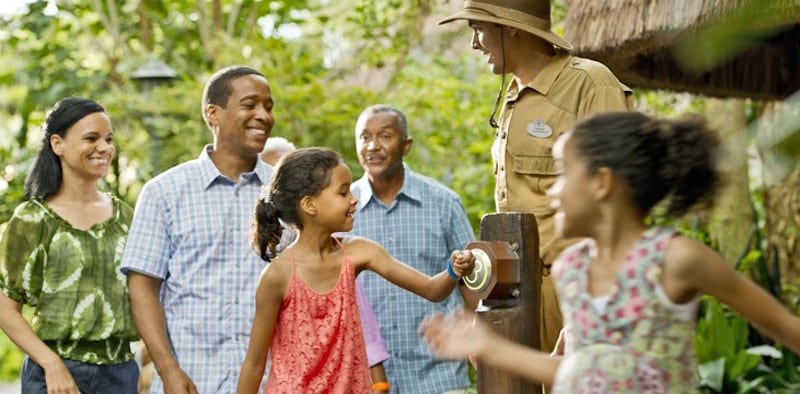Skift Take
There indeed is magic in the MyMagic+ wristbands for The Walt Disney Co. as it is making for a more efficient operation and is helping to increase visitor spending. Abracadabra.
The Walt Disney Co. is making so much money from visitors to Disney World in Orlando using its MyMagic+ wristbands that the extra bucks this year will offset “the pre-opening spending” for Shanghai Disneyland.
That’s the word from Disney CFO Jay Rasulo, who joined CEO Bob Iger during the company’s fiscal first quarter 2015 earnings call yesterday, in lauding the contributions of the radio-frequency-equipped wrist devices.
With MyMagic+, which is fully rolled out in Orlando and will be moving to other Disney parks in coming years, guests can swiftly enter the park, get FastPass access to attractions, make purchases, and open their hotel room door.
Igor said there were days during the recent Christmas holiday period when there were 250,000 visitors at a time in Disney World.
“And when you just consider how many guests you have to flow through the gates when the park opens in the morning, the fact that you have a band that enables you to basically walk right in, touch the band to a kiosk and keep going, instead of handing a ticket to a cast member making sure the ticket is right and then going in,” Iger said.
“That’s obviously creating a huge improvement meaning much quicker entrance into the park,” he added. “And what this all adds up to is our ability to manage more people at a time without in any way diminishing guest experience. We did see in the quarter a positive impact to the bottom line from MyMagic+, just the beginnings of it.”
Hotels are Full
It was all part of a positive first quarter, which ended December 27, for Disney’s parks and resorts business. Disney’s parks and resorts revenue increased 9 percent to $3.9 billion during the quarter as operating income climbed 20 percent to $805 million.
The profits at parks and resorts were especially driven by domestic parks with their higher volumes and increased guest spending. Disney Cruise Line, which is part of the parks and resorts unit, also saw higher guest spending, although to a lesser extent than at the theme parks.
Hotel occupancy at Disney’s U.S. properties jumped 8 percentage points to 89 percent during the quarter, and per-room spending rose 4 percent.
CFO Rasulo considers 89 percent hotel occupancy as basically “full.”
“I think hoteliers in general will tell you that to try to fill a hotel beyond 89 percent, 90 percent, 91 percent is extremely difficult, because it takes — to go beyond that — it takes too many match-ups of people who are staying three nights checking out replaced by five nights replaced in rapid succession, it becomes quite difficult,” Rasulo said. “So … when you see occupancy in that kind of range, you are getting close to pretty much a full house and those were historically the numbers at which we started to think about expanded capacity.”
Rasulo pointed out that there are “many, many more hotel rooms” in Orlando that aren’t on Disney’s property “and I am sure they are not experiencing rates of occupancy anything like that.”
Still, his comments make it seem as though Disney may be mulling adding another on-property resort.
The Daily Newsletter
Our daily coverage of the global travel industry. Written by editors and analysts from across Skift’s brands.
Have a confidential tip for Skift? Get in touch
Tags: cruise, disney, earnings, florida, hotels
Photo credit: A family uses the MyMagic+ band in this promotional image from Disney. Walt Disney World Resorts
